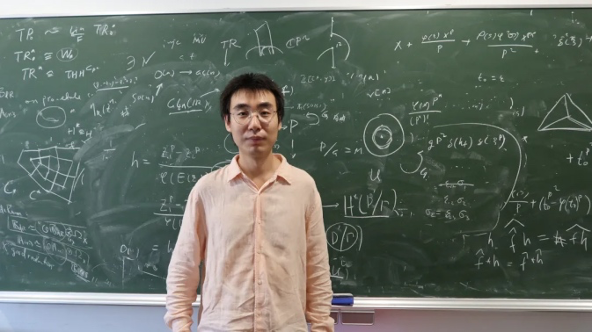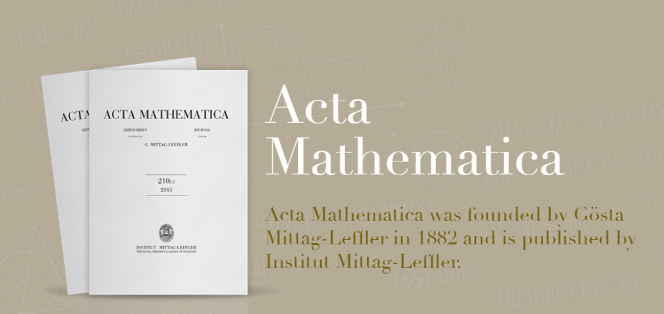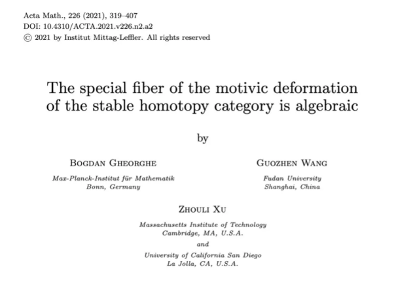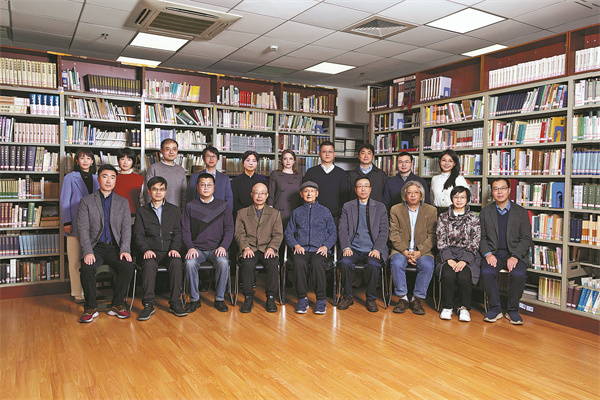“How would you cut a Möbius strip in half? Most people would make the cut down the middle of the strip, but what about we cut into the side of the strip instead?”

▲ Möbius Strip, a surface with only one side
This is a maths problem Guozhen Wang, professor at Shanghai Center for Mathematical Sciences, posed to his students.

This July, Wang published a paper entitled “The special fiber of the motivic deformation of the stable homotopy category is algebraic” with co-authors B. Gheorghe from Max Planck Institute for Mathematics, Germany and Zhouli Xu from Massachusetts Institute of Technology and University of California San Diego in Acta Mathematica, one of the top four international journals of mathematics (the other three journals are Annals of Mathematics, Inventiones Mathematicae, and Journal Of The American Mathematical Society). Actually, this is the 2nd paper published by Wang in the top four journals over the past 5 years.

This is also the 6th paper published by researchers from Shanghai Center for Mathematical Sciences in the top four journals since its establishment.
“I don’t intend to get a good answer from my students, but to see if they can come up with different cutting methods leading to different results.” Wang said, “It is always more important to identify maths problems than solve them.
Wang has grown an interest in algebraic topology since he was an undergraduate at Peking University. “I can solve difficult differential equations simply based on certain topological features without considering other details. I think it’s an amazingly effective solution,” Wang said.
The homotopy groups of spheres studied by Wang is a fundamental maths problem and one of the most important problems in algebraic topology.
Calculations around three-dimensional spheres are complex already, while spheres of higher dimensions like 59, 60, 90 and 120 require extremely time-consuming calculations and sometimes totally different solutions.
Facing massive computing workload, Wang never stops seeking efficient tools, and for that end, he picked up a new programming language.

▲Wang writes programs at his desk
At first, he used the traditional C language which is bug-prone and often led to failure of his experiments.
So he tried to rewrite the program in F# language to reduce bugs, which was a success. But as the massive amount of data overwhelmed his old computer, he realized he might need a more powerful server and upgraded his device before he found that the new computer was unable to compile programs written in F# language.
In the end, he translated F# back into C, and with some more trials and errors, he managed to run his program smoothly. GuozhenWang thus created a new tool.
By comparing his results with those of his collaborator then Daniel C. Isaksen, professor at Wayne State University, Wang found that the computer-generated algebraic Novikov spectrum is identical with the motivic Adams spectrum of the cofiber of τ as obtained by classical methods. This is an exciting discovery, indicating that a class of complex Adams differentials can be obtained completely by a computer.
This paved the way for Wang to theoretically prove the results.


▲ Wang's latest paper titled “The special fiber of the motivic deformation of the stable homotopy category is algebraic” established in Acta Mathematica
In his latest research paper, he proposes a new solution for computing the stable homotopy groups of spheres. The paper defined the Chow t-structure in the motivic stable homotopy category. Using this t-structure, Wang and his collaborators proved that the special fiber of the motivic deformation over the complex numbers is algebraic. Along the way, they also established that the modulo tau motivic Adams spectral sequence is isomorphic to the algebraic Novikov spectral sequence.

This fall semester, Wang offers a course on geometrical topology for the undergraduate students from the “Experimental Class of Mathematical Talents”, an innovative education initiative of Fudan University to cultivate the students’ talents in maths.
Wang hopes that the students can grow a passion in mathematics and excel in the field in the future, but even if they decide to do something else, they will be able to make full use of what they have learned from the program.
“Maths not only transforms the way you think, but also is a fundamental skill for life,” said him.
Invited to give a 45-minute speech at next year’s International Congress of Mathematicians in St. Petersburg, Russia, Wang will share his research findings about stable homotopy groups of spheres and motivic homotopy theory. The International Congress of Mathematicians (ICM) is the largest and most important conference in International mathematics sponsored by the International Mathematical Union (IMU), hailed as the Olympics of mathematics.

“The special fiber of the motivic deformation of the stable homotopy category is algebraic” published by Acta Mathematica
Link:https://dx.doi.org/10.4310/ACTA.2021.v226.n2.a2
Presented by Fudan University Media Center





